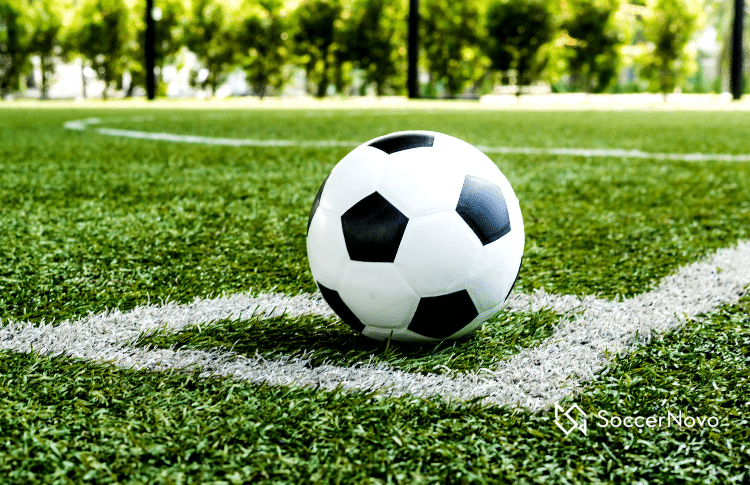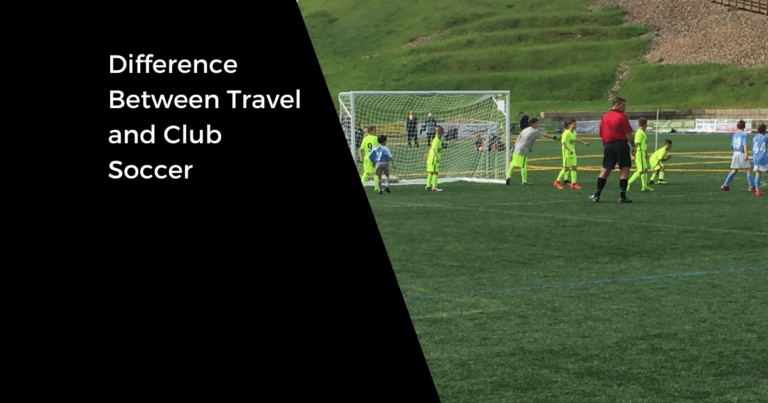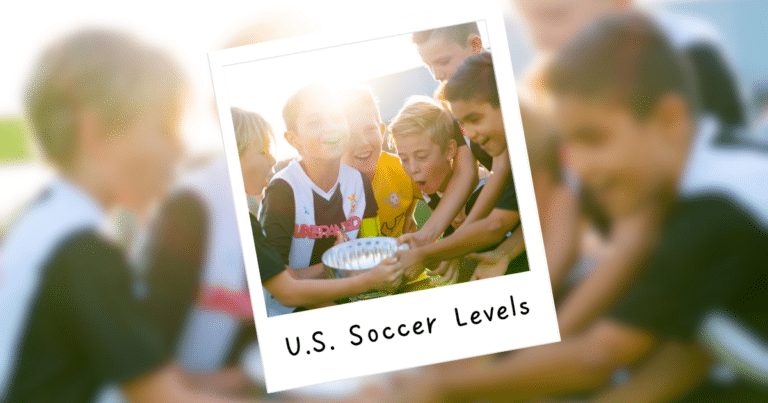How to Stay Onside in Soccer
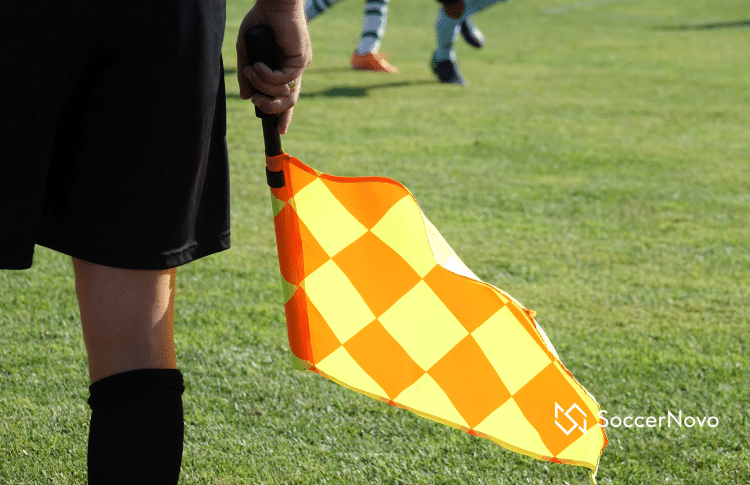
If you’re an attacking player, staying onside in soccer is important. Understanding the rules and knowing how to stay onside is priority number one and two.
To stay onside in soccer, you need to have a good understanding of the rules and be able to anticipate the movements of your teammates and opponents.
Offside is one of the most important rules in soccer and is designed to prevent attacking players from gaining an unfair advantage over the defenders.
If you are caught offside, the play will be stopped, and the opposing team will be awarded a free-kick.
In this article, we’ll be explaining how to stay onside in soccer games. This is a must-read if you are a striker, winger, midfielder, False 9, or another other attacking position.
Basic Offsides & Onsides Rules
Offside Rule in Soccer
The offside rule is perhaps the most important and confusing rule to understand when it comes to soccer.
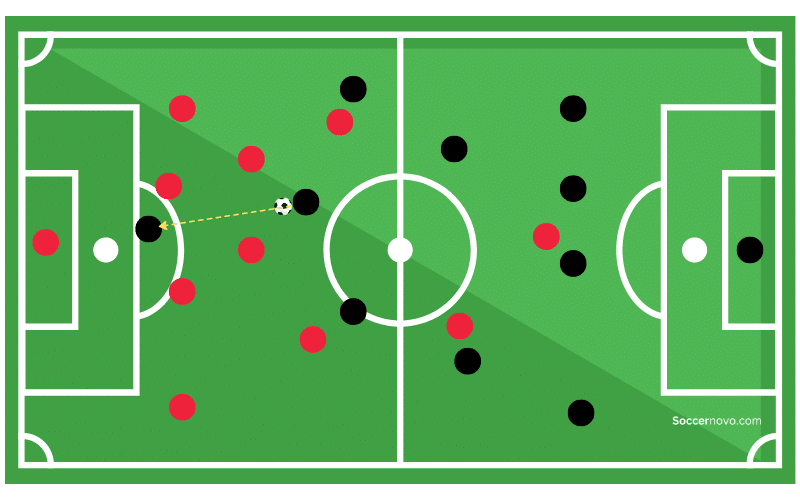
Essentially, the rule states that a player is offside if they are closer to the opposing team’s goal than both the ball and the second-to-last defender (including the goalie) when the ball is passed to them.
Continuing reading more about the offside rule in soccer.
Onside Rule
If you are onside, it means that you are in a legal position to receive the ball.
To be onside, you must be level with or behind the ball when it is passed to you, or you must have two defenders (including the goalkeeper) between you and the goal line.
When you’re onside, you have more freedom to move around the field and create scoring opportunities.
However, it’s important to stay aware of your position and the position of the ball to avoid accidentally becoming offside. The second you are not paying attention, the more vulnerable you are to being in an offside position.
Staying Onsides in Soccer
Being in an offside position can result in missed scoring opportunities, lost possession, and even conceding goals.
In this section, we will discuss two crucial aspects of staying onside: Positioning and Timing.
Positioning
To stay onside, you need to be aware of your positioning on the field.
A player is in an offside position if they are nearer to the opponent’s goal than the ball and the second-last defender. To avoid being in an offside position, you should:
- Stay behind the ball: If you are behind the ball, you cannot be called offside. So, if you are unsure of your positioning, it’s always better to stay behind the ball. Of course, this doesn’t always make sense especially if you are an attacking player. So, you’ll need to…
- Stay level with the second-last defender: To stay onside, you need to be level with the second-last defender. This means you need to be in line with the defender or behind them. To be safe, ensure your entire body is slightly behind the second-to-last defender.
- Time your runs: Timing your runs is crucial to staying onside. You need to make sure that you are not ahead of the ball when it is played. To do this, you need to time your run so that you are behind the ball when it is played. Use your vision and awareness to see when your teammate kicks it. You will want to make your run as soon as he or she kicks the ball.
Timing of Soccer Runs
Timing is everything when it comes to staying onside.
You need to time your movements correctly to stay on the right side of the offside line. Here are some tips to help you with your timing:
- Watch (don’t stare) the ball: Keep your eyes on the soccer ball at all times. This will help you time your movements correctly.
- Anticipate the pass: Try to anticipate where the ball is going to be played. This will help you time your run so that you are not offside.
- Communicate with your teammates: Good communication is essential in soccer. If you are making a run, let your teammate know so that they can time their pass correctly. In this case, even verbal cues can be beneficial to the passer and receiver.
By following these tips, you can improve your positioning and timing, which will help you stay onside and take advantage of more scoring opportunities.
Remember though, staying onside is not just about avoiding being called offside, but also about creating space and opportunities for your team.
Watch Out for Offside Trap
The offside trap is a defensive technique used by the opposing team to catch you offside. To beat the offside trap, you need to be aware of the positioning of the opposing team’s defenders.
How to Beat the Offside Trap
- Stay alert: Keep an eye on the opposing team’s defenders and their positioning. If they’re moving up the field in unison, they may be trying to catch you offside. If an opposing coach yells something like, “everyone push up!”, they may be trying to catch in an offside trap.
- Time your run: Time your run so that you’re not ahead of the opposing team’s defenders when the ball is played to you.
- Make diagonal runs: Make diagonal runs instead of running straight towards the goal. This will make it harder for the opposing team’s defenders to catch you offside.
- Use quick passes: Use quick passes to avoid being caught offside. If you receive the ball quickly, you’ll have less chance of being caught offside.
- Communicate with your teammates: Communicate with your teammates to ensure that you’re on the same page. If they know where you’re going to be, they can play the ball to you without catching you offside.
Bonus: Better Communication in Soccer
Communication is a crucial aspect of soccer, and it plays an important role in staying onside.
Effective communication can help you avoid being called offside and increase your chances of scoring a goal.
There are two types of communication that you need to master in soccer: verbal and non-verbal.
Verbal Communication
Verbal communication is the most common type of communication in soccer. It involves using your voice to convey information to your teammates.
You need to communicate with your teammates to ensure that you are not offside when you receive the ball.
Here are some examples of verbal communication that you can use to stay onside:
- Call for the ball: If you want your teammate to pass you the ball, you need to call for it. Use their name and ask for the ball. For example, “Sam, yes, pass me the ball.”
- Tell your teammate to hold the ball: If you are in an offside position, you need to tell your teammate to hold the ball. Use phrases like “wait” or “hold” to signal to your teammate that they should not pass the ball to you.
- Let your teammate know you are onside: If you are in an onside position, you need to let your teammate know. Use phrases like “I’m on” or “play it” to signal to your teammate that they can pass you the ball.
Non-Verbal Communication
Non-verbal communication is almost equally as effective in soccer.
It involves using your body language and gestures to convey information to your teammates.
Non-verbal communication can be especially useful when you are in a noisy environment and cannot hear your teammates.
Here are some examples of non-verbal communication that you can use to stay onside:
- Use your hand: You can use your hand to signal to your teammate that you are onside. Hold your hand 👋 up in the air to signal that you are in an onside position.
- Move your body: You can also use your body to signal to your teammate that you are onside. Move in a way that shows that you are in an onside position. For example, move towards the ball to show that you are ready to receive it.
- Use eye contact: Eye contact can be a powerful form of non-verbal communication. Look at your teammate to signal that you are ready to receive the ball.
Practice Soccer Drills for Offsides
To improve your ability to stay onside during a soccer game, it is important to practice drills that focus on your timing and positioning.
1. Cone Drill
Set up a line of cones on the field and stand behind them.
Have a partner pass the ball to you, and as soon as they do, run forward and weave in and out of the cones.
Your partner should time their pass so that you are just onside when they release the ball.
This drill will help you practice your timing and positioning.
2. Offside Trap Drill
This drill is designed to help you recognize when the opposing team is trying to catch you offside.
Have a coach or teammate stand on the sideline with a flag.
Start on the field, and when the coach or teammate raises the flag, run towards the goal.
Your teammate should time their pass so that you are just onside when they release the ball.
This drill will help you practice recognizing the offside trap and adjusting your positioning accordingly.
3. Three-Man/Woman Drill
This drill is designed to help you practice staying onside while making runs with your teammates.
Set up two cones about 10 yards apart and have two teammates stand behind them with a ball.
Start about 5 yards in front of the cones and make a run towards them.
Your teammates should time their passes so that you are just onside when they release the ball.
This drill will help you practice your timing and positioning while making runs with your teammates.
4. Small-Sided Game
Playing in a small-sided game is a great way to practice staying onside in a game-like situation.
The smaller field and fewer players make it easier to focus on your positioning and timing.
Make sure to communicate with your teammates and adjust your positioning as necessary to stay onside.
Conclusion
Staying onside in soccer is crucial if you want to be an effective attacking player.
By understanding the offside rule and following some basic guidelines, you can avoid being called offside and give your team the best chance of scoring.
Remember to stay behind the last defender and keep an eye on the ball when making runs. Try to time your runs so that you receive the ball when you are in a good position to score. If you are not sure whether you are onside or not, err on the side of caution and stay behind the last defender.
Also, it’s equally as important for the passer to understand the rules of the game. If you see a player calling for the ball but they are offsides, hold it. Let them get onsides then proceed to distribute the ball.
I hope this article helped! It is an important topic and one that needs to be thoroughly explained.

Written By: SoccerNovo
SoccerNovo is an independent youth soccer media brand built to help parents, players, and coaches better understand the game and the pathways available in U.S. soccer. Our mission is to make youth soccer simpler, clearer, and more accessible for everyone involved in it.
Let’s connect


